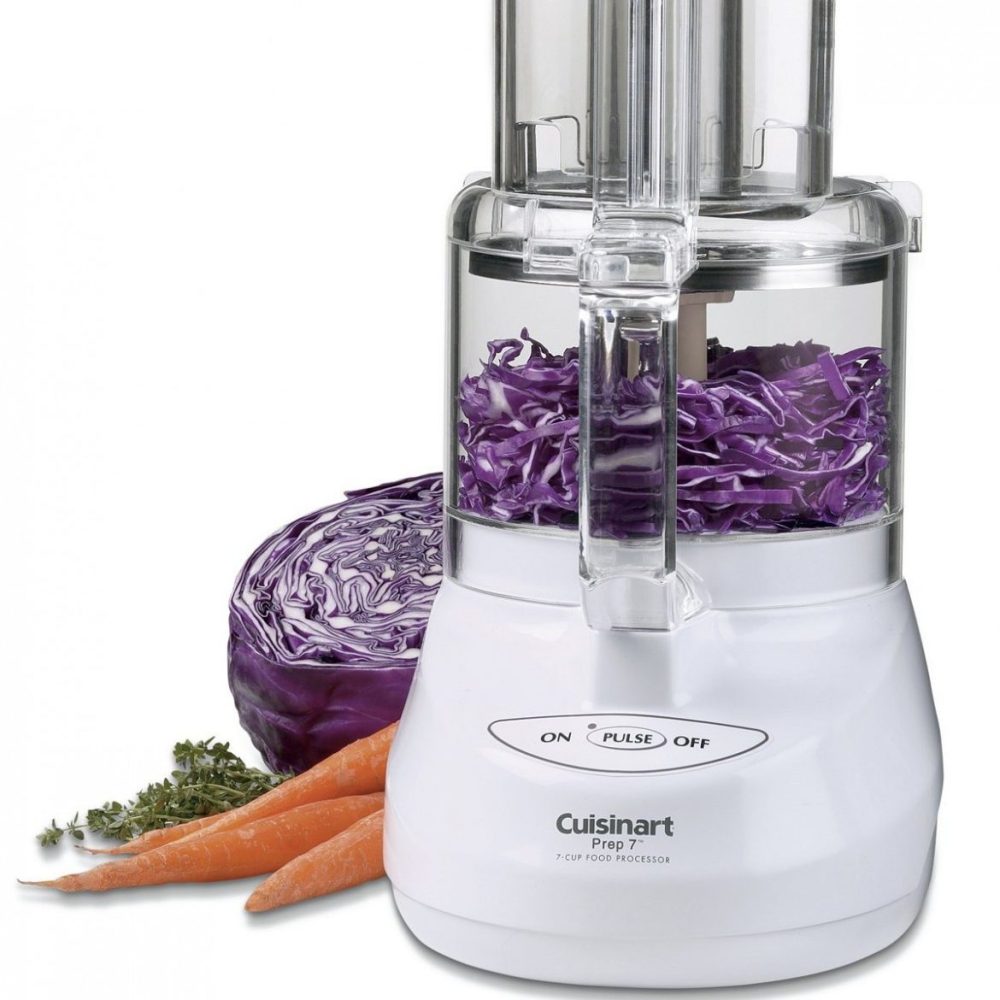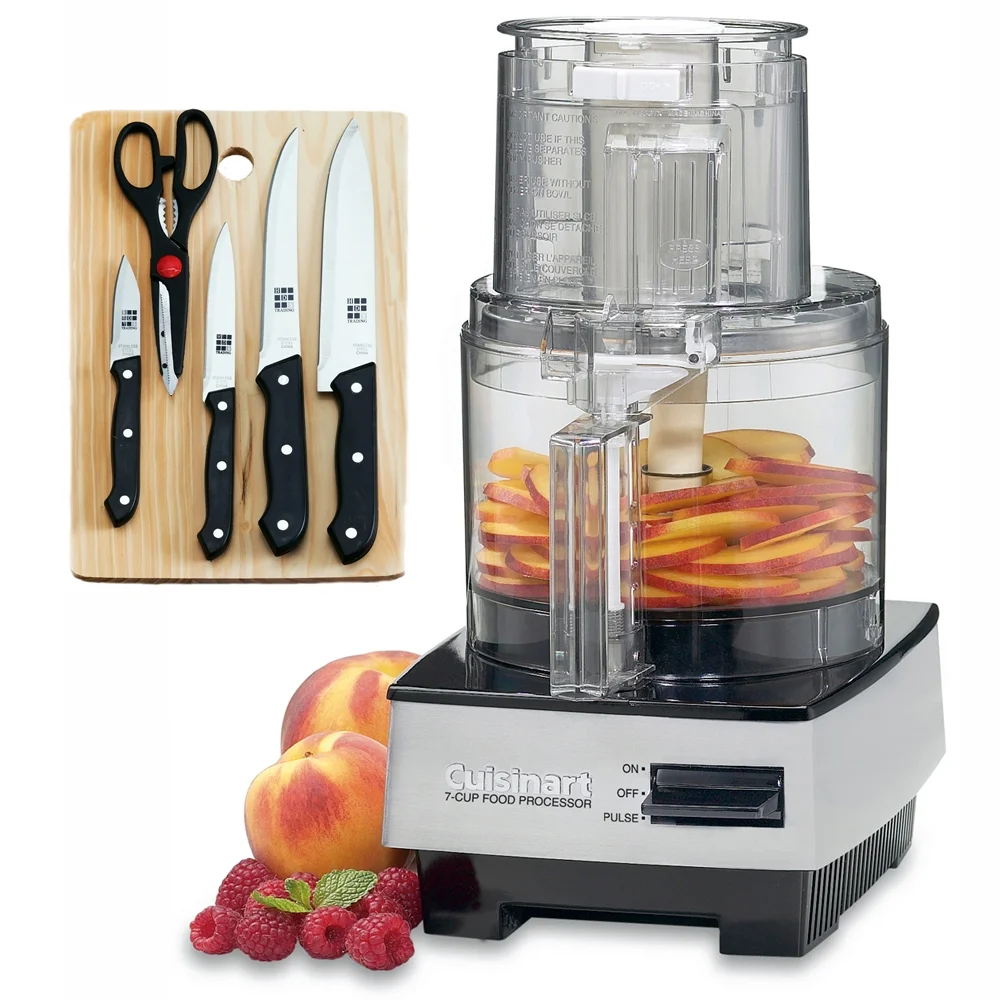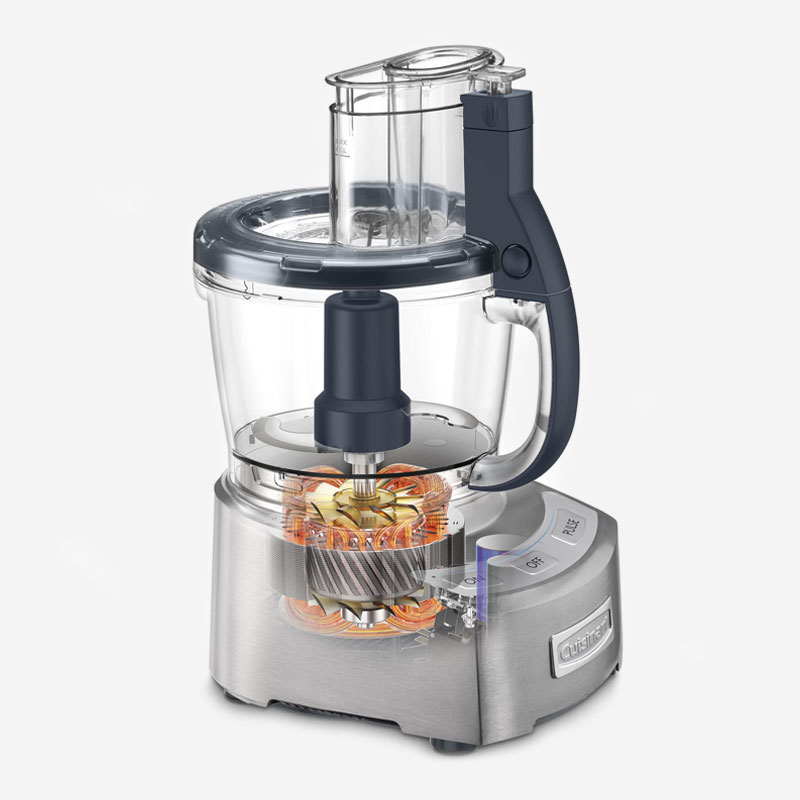
Common Reasons Why Your Cuisinart Food Processor May Not Start
When your Cuisinart food processor won’t turn on, it can be both frustrating and confusing. Here are some common issues that might be causing this problem:
- Power Source Trouble: Check if the food processor is plugged in properly. A loose connection can prevent it from starting.
- Faulty Outlet: Sometimes the problem is with the electrical outlet. Test other devices in the same outlet to confirm.
- Blown Fuse or Tripped Circuit: A blown fuse or a tripped circuit breaker in your home could cut power to the kitchen appliances.
- Improper Assembly: Your Cuisinart food processor has an interlock system. If the bowl and lid are not locked in correctly, it won’t start.
- Defective Motor: With frequent use over time, the motor of your food processor may wear out and need replacement.
- Worn Out Parts: Components like the start button or electrical cord can wear out or become damaged, causing issues.
- Overheating: If the food processor was recently used, it might have overheated. Let it cool down before trying again.
Ensuring we understand these common problems can guide us in troubleshooting effectively and taking the right steps to get the processor running again.
Initial Checks Before Troubleshooting
Before you dive into more complex troubleshooting for your Cuisinart food processor that won’t turn on, there are initial checks to perform. These simple yet crucial steps can save you time and effort by resolving basic issues that might be responsible. Here’s what to do:
- Inspect the Power Cord: Start by looking at the power cord. Ensure it’s not damaged and is firmly plugged into the food processor and the wall socket.
- Check the Power Switch: Sometimes, the switch could be faulty. Try toggling it on and off to see if there’s any response.
- Verify the Power Supply: Ensure the electrical outlet is functioning. You can plug in another device to check if it receives power.
- Examine Assembly: Look over how the bowl and lid are attached. Make sure they click into place correctly, fulfilling the safety interlock feature.
- Reset if Overloaded: Your food processor might have an overload protection feature. If so, let it cool down and then press the reset button if available.
- Look for Visual Cues: Some models have indicator lights. Check if there are any visual signals like blinking or steady lights that could denote an issue.
By covering these initial checkpoints, you may quickly find the problem and possibly fix it without needing to delve deeper into troubleshooting. If these steps don’t resolve the issue, proceed to the more specific measures outlined in the following sections.
Safety Features and Their Impact on Functionality
Cuisinart food processors include several safety features. These are critical for safe operation, but they can also affect whether the device starts. Here’s how these features impact functionality:
- Safety Interlock System: This prevents the processor from running if it is incorrectly assembled. Ensure the bowl and lid are securely locked in place.
- Overload Protection: This feature protects the motor from damage due to overloading. If activated, it might need a reset to work again. Allow the unit to cool down, then try pressing the reset button.
- Thermal Cut-off: To prevent overheating, some models have a thermal cut-off mechanism. If your processor doesn’t start, it could be cooling down from such an event. Wait a bit before attempting to turn it on again.
Understanding and correctly interacting with these safety features can help you resolve issues when your Cuisinart food processor won’t turn on and ensure it functions as expected. They are essential for both safety and proper operation of the equipment.
Step-by-Step Guide to Fixing a Non-Responsive Cuisinart Food Processor
If your Cuisinart food processor won’t turn on, follow this guide for potential fixes:
- Step 1: Perform a Safety Check: Ensure it’s unplugged. Check for exposed wires or damaged parts.
- Step 2: Inspect the Interlock System: Make sure the bowl and lid are correctly locked in place.
- Step 3: Test the Power Source: Plug in another device to confirm the outlet works. If not, try a different outlet.
- Step 4: Examine the Motor: Look for any signs of damage or wear. If the motor seems faulty, it may need professional attention.
- Step 5: Check for Overheating: If the processor was recently used, it might be too hot. Let it cool down thoroughly before trying again.
- Step 6: Reset Overload Protection: If your model has a reset button, push it to reset the motor.
- Step 7: Review User Manual: Check the manual for any specific reset procedures for your model.
By following these steps, you can often determine why your Cuisinart food processor won’t turn on and possibly fix the problem. If these suggestions do not work, the issue may be more serious, and professional repair might be necessary.
Tips to Maintain Your Cuisinart Food Processor for Optimal Performance
Maintaining your Cuisinart food processor is crucial for its longevity and functionality. Here are some key tips:
- Clean Regularly: After each use, clean all parts thoroughly. This prevents food build-up and potential damage.
- Check Blades: Inspect the blades periodically for sharpness and damage. Dull or damaged blades can hinder the processor’s performance.
- Secure Loose Parts: Ensure all components, especially moving parts, are tight and secure.
- Store Properly: Keep the processor in a dry, cool place. Avoid stacking heavy items on or near the appliance.
- Regularly Inspect the Cord: Look over the power cord for any fraying or damage. Replace it if needed.
- Use Correctly: Follow the manufacturer’s instructions for proper use. Overloading or misuse can lead to issues.
- Annual Check-Up: Consider a yearly inspection by a professional to ensure everything is in good working order.
By applying these maintenance tips, your Cuisinart food processor should remain in excellent condition, ensuring it is always ready when you need it.
Recommended Tools and Accessories for Repair
When facing issues with your Cuisinart food processor not turning on, having the right tools can make the repair process smoother. Here’s what you might need:
- Screwdrivers: A set of screwdrivers with various head sizes will help you open the casing safely.
- Pliers: Sometimes, you need pliers to grip and remove small components.
- Multimeter: This device is essential for testing electrical currents and pinpointing issues with power.
- Motor Brushes: If the motor is the problem, new brushes could fix it. Make sure they’re compatible with your model.
- Safety Gloves: Wear gloves to protect your hands from sharp edges and electrical components.
- Replacement Parts: Keep handy any specific parts Cuisinart recommends for your model, like seals or blades.
- Lubricant: Food-safe lubricant can help movable parts run smoothly after cleaning and repair.
Ensure that you disconnect the food processor from power before attempting any repair. If you’re unsure about handling electrical repairs, contact a professional to avoid injury or further damage to your appliance.
 When to Seek Professional Repair or Consider Replacement
When to Seek Professional Repair or Consider Replacement
Sometimes, even after thorough troubleshooting, your Cuisinart food processor won’t turn on. In such cases, it’s important to recognize when to call in a professional or consider getting a replacement. Here are scenarios when expert help may be needed:
- Persistent Issues: If problems continue despite your troubleshooting efforts, a deeper issue may exist.
- Motor Malfunctions: If you suspect the motor is broken and you’ve verified this with a multimeter, professional repair is necessary.
- Smoke or Strange Noises: Any signs of smoke or unusual sounds during operation mean immediate attention is required.
- Electrical Problems: If testing reveals electrical issues within the food processor, a professional should resolve these safely.
- Warranty Validity: Check if your Cuisinart is still under warranty. If so, the manufacturer may offer free or discounted repairs.
Considering a replacement might be more cost-effective if your food processor is old, parts are discontinued, or the cost of repair is high compared to a new unit. Always consult with a professional repair service or Cuisinart’s customer support before making a decision. Their advice can steer you in the right direction, ensuring your safety and satisfaction with your kitchen appliance.







